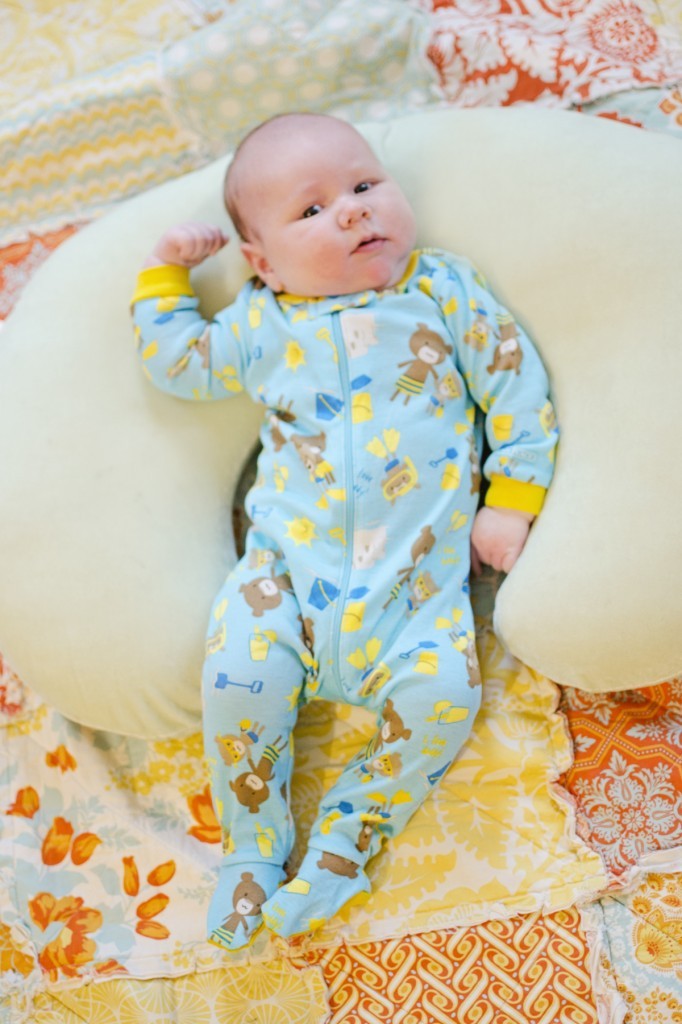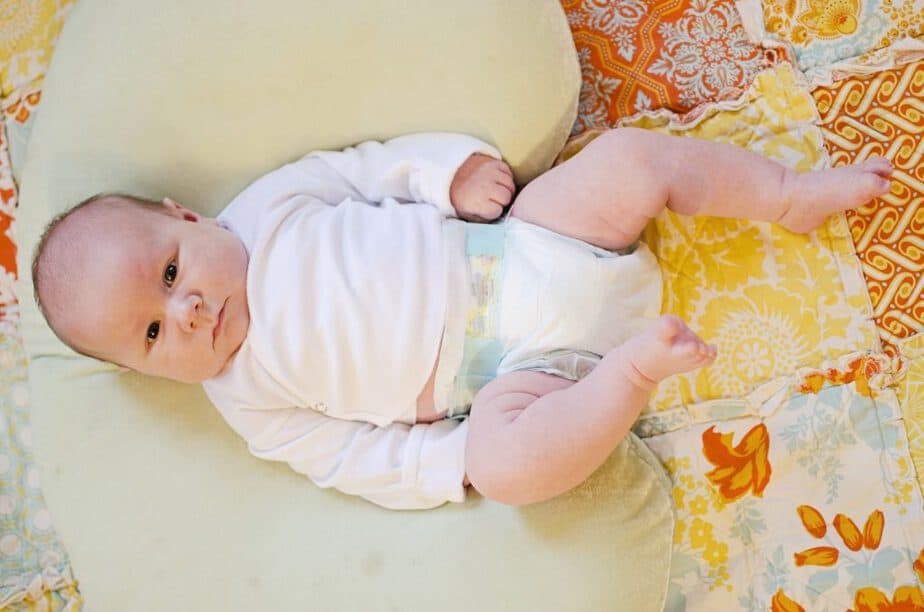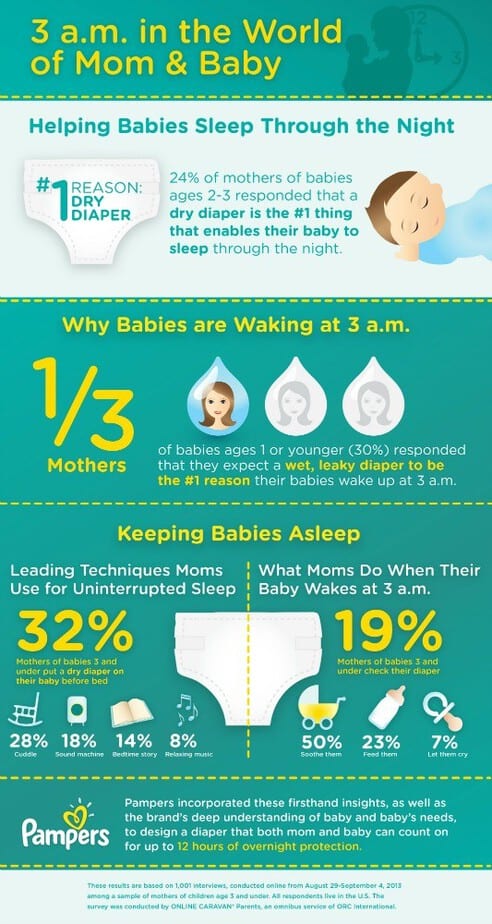This daylight savings time sleep tips post was made possible by Double Duty Divas and Pampers. I was provided the featured product free of charge to facilitate my review, but all opinions are 100% mine.

When we all go to sleep on Saturday, November 2nd, we’ll set our clocks BACK an hour, allegedly gaining an hour of sleep. To those of us with infants and small children, this gained hour- well, it doesn’t actually happen that way. While we adults can look at the clock and gleefully realize we don’t have to get up for another hour, babies’ internal clocks don’t. Truth be told, my 8 year old doesn’t “get” it. Often times, my own house included, we parents dread the end of daylight savings time because it means our kids’ schedules are going to be disrupted and that’s rarely a good thing. Over half of moms (52%) feel that their baby’s sleep patterns are thrown off when the clocks ‘fall back’ and Daylight Savings Time ends, so if you are in that 52% with me, know you are NOT ALONE!

One thing that’s always a must when your kids are still wearing diapers is a diaper that can stay dry and hold up to a nice long sleep. The last thing you want is for your kid to finally be starting to sleep well only to wake from being wet in the middle of the night or the wee hours of the morning! Pampers Baby Dry is made to keep your little one dry up to 12 hours- so when they finally DO sleep for you- they won’t wake up wet! A good diaper and blackout curtains are 2 of my top contenders for must-haves to help baby’s schedule adjustments like the time changes!
To help your family make a smooth transition, here are 10 tips that you can implement starting now to make a smooth transition as we fall back one hour:
-
Many parents I have spoken to dread this time change as their children will be waking up even earlier, and previous early rising issues can become big problems. To help make ensure that your baby’s sleep doesn’t go completely off the rails, make a slow transition. Make a point to slowly adjust your child’s bedtime and naptimes an hour earlier, just 15-30 minutes a day for a few days before daylight savings ends. This way, your child will already be adjusted to the time change. While you’re adjusting naps and bedtime, make sure that you also adjust mealtimes in 10-15 minute increments to help ease the transition.
-
For children under 4 years old, its essential that we make naps a priority this time change. Quality nighttime sleep is dependent upon good daytime sleep. Make sure that your children are well-napped during the day so that when the time change takes effect having a later-feeling bedtime isn’t as much of an issue. Between naps, make sure that your children are exposed to plenty of natural light; open the curtains, take an afternoon walk, or just play outside. To help your children adjust, about 30-45 minutes before naps and an hour before bedtime. Close the curtains, dim the lights and follow your soothing sleep routine. If you find that your baby is still having trouble with sleep even after a good day of naps, you may need to temporarily add a third late-afternoon nap, of no more than 45 minutes to help make sure that your baby isn’t overtired at bedtime.
-
To help your baby sleep more soundly, consider installing blackout curtains and using a sound machine. Although the days are getting shorter, there may still be some natural light present, especially in the morning as well as noise when you put your baby to bed. To mitigate these, install blackout curtains and use a sound machine to help buffer outside light and sound. Black out shades are great for children with early rising issues, which is often a problem after the fall time change, especially if your child was already getting up before 6:00 a.m.
-
While preparing for the time change (and after), use dramatic wake up to help your children adjust to the change. It’s entirely possible that after the change your baby may be waking earlier than normal. If this is the case, keep your baby’s room dark and quiet, and use a gentle method to encourage your child to go back to sleep; you may need to check on your baby and reassure that all is well, and remind them that it’s not quite time to wake up. At this point, you can either sit on a chair near the door or leave the room and do timed checks. If your child is over 2.5 years old, I recommend that you purchase a toddler clock or wake up alarm that signals them when its time to get up and start the day, as this will help your toddler stay in bed (and hopefully fall back asleep) until at least 6:00 a.m., at which time you open the blinds and make a big deal of “good morning”. Make sure that you expose your baby to lots of natural light first thing in the morning to help reset his circadian rhythm to coincide with the new time.
-
Watch your baby’s wakefulness windows. Children have a limited window of wakefulness (the time that they can be awake and alert without meltdowns) between naps and bedtimes. Make sure that you watch your baby for sleepy cues carefully. Make sure that you’re changing your baby’s diaper right before your child goes into the crib for naps or bedtime. Keeping your child dry will help to prevent unnecessary night awakenings, and help to ensure a happy, well-rested baby the next day.
-
Get outside. It’s getting colder, so bundle everyone up and take a morning walk, just 20 or 30 minutes to make sure that you and your baby get some sunshine, which will help your circadian rhythm adjust to the time change. If you can’t manage a morning walk, make sure that the blinds are open as you start your day, and keep them open up to 45 minutes before nap and bedtimes to help your child adjust to the time change.
-
Stick to your flexible schedule. If you always have breakfast at 8:00 a.m., then keep your schedule, but make sure that you are following it according to the time change. You can start slowly adjusting your daily schedule forward in 10-15 minute increments 4-5 days before the time change. So if you normally have lunch at 11:30, on Wednesday, have lunch at 11:40, on Thursday, move lunch to 11:50 and so on. The same goes for naps and bedtimes. The idea is that when the time change takes effect your child’s circadian rhythm, or internal clock will already be in sync with the change.
-
The end of daylight savings is a good time to make sure that your child’s bedtime is age-appropriate. Infants and babies do best with a bedtime between 7:30 and 8:00 p.m. Later bedtimes have shown to have a negative effect on children’s attitudes and their ability to focus, and can result in instances of early rising. If you find that your baby has been going to bed too early or too late, take advantage of the time change to gradually shift bedtime (back or forward in 15-30 minute increments over the next week).
-
To ensure that your children know when it’s time to sleep, rely on your established soothing bedtime routine. Routines are comforting for children, so make sure that you keep your baby’s routine the same, although you will be starting it a bit later due to the time change. Make sure that you are changing your baby’s diaper right before you tuck them into the crib to help prevent wet diapers at night and unnecessary nighttime awakenings. If your baby often has diapers that leak during the night and require a change, please make sure to use overnight diapers that can keep your baby dry for up to 12 hours to help limit your baby’s sleep disturbances.
-
If you do have a child who is getting up before 6:00 a.m., make sure that you respond to early risings quickly and consistently. Although you may sail through the time change, some babies will have trouble with early rising for a few days. Respond to these awakenings quickly, gently resettling your baby so that sleep comes easier. Be careful to make sure that your baby is actually awake before you go help, however, as you don’t want to create a new sleep crutch which would cause your baby to rely on you to get back to sleep. Remember to utilize dramatic wake up once 6:30 a.m. rolls around!
If you do nothing else to prepare for the time change, make sure that your children have had adequate naps in the days leading up to the time change, and help to prevent unnecessary night awakenings by putting your baby into a clean, dry diaper right before you settle them into the crib for the night.
Kim West, LCSW-C, Sleep Lady Solutions, LLC, copyright 2013
#PampersSleepChat Twitter Party
The Twitter Party will take place on November 7th at 9pm EST. Chat about how the end of Daylight Savings Time can affect sleep patterns & get tips on easing the transition from The Sleep Lady, Kim West.
RSVP: http://twtvite.com/
Prizes include:
$50 AMEX Gift Card, $25 Children’s Place Gift Card, Pampers product and book by Kim West.
$100 AMEX Gift Card, Pampers Product, series of books by Kim West
Grand Prize: $500 AMEX Card to purchase sleep items such as a new crib, video monitor, etc. Sponsored by @Pampers
One reader will win a pack of Pampers Baby Dy Diaper and a pair of The Children’s Place pajamas!
#DDDivas #DivasSleep #sponsored


Nicole D. says
We always keep a routine, and a warm bath before bed seems to help!
sandra says
i hope scattergories is in the goodie bag
sandra says
keep a regular sleep schedule
Brei H. says
Rocking my son to sleep always seemed to help him stay asleep longer!
Jillian says
Try to maintain a schedule and routine to make going to sleep easier for everyone.
Gina H. says
Sleep when the baby sleeps (especially newborns!).
Dawn Monroe says
Im sure its the wrong question but we enjoy playing pictionary and the older family enjoys penny anny poker.
Dawn Monroe says
Sleep at every oppurtunity. If the baby is asleep at 1 in the afternoon then take a nap with them. Also a swing can be your best friend.
Karen Beckett says
I never did fall for the “extra” hour of sleep thing. I am always mixed up on my sleep pattern after a time change. However, I do tend to want more sleep during the winter months.